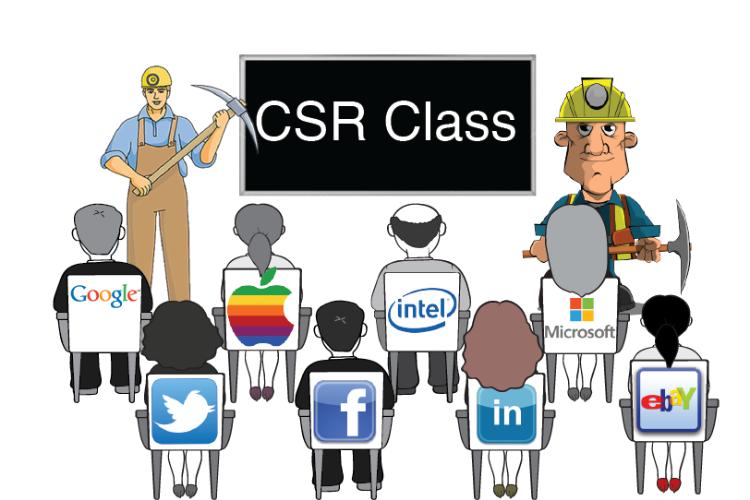Dirty, ugly mining has lessons for Hi Tech!
 by Wayne Dunn
by Wayne Dunn
The mining industry has become relatively good at figuring out how to organize itself to create local benefits and value as a by-product of its core business operations.
In general mining goes beyond simply meeting regulatory requirements on environment, labour, safety, etc. and is actually creating additional value for local communities through targeted development programs and efforts.
From working with local agricultural producers, to supporting alternative economic opportunities for women to general education and health programming and across a wide-range of other social value areas, the mining industry is reaching out to support people and families in the communities near its operations.
Of course, it is far from perfect and one doesn’t have to look far to find where it has come up short. But, what is important here is that there are many places where it is succeeding and having meaningful impacts on people, families and communities.

What does this have to do with hi tech? Lots.
In general the hi tech industry has been paying increasing attention to its supply chain. To materials sourcing and to the labour, environmental and human rights practices in its supply chain.
This isn’t easy with supply chains spread throughout developed and developing economies and across a range of national regulatory frameworks.
In many countries the national regulations governing environment, labour standards, health, safety and human rights are below what the hi tech industry’s consumers would consider appropriate.
Many companies have acted to set their own standards in these areas to guide their employees, contractors, sub-contractors and others in their supply chain, essentially establishing a private regulatory framework.
Managing compliance throughout this diffuse network and across its linguistic, cultural and economic diversity is challenging to say the least. Often the marketplace expectations that drive this private regulatory framework are totally foreign to the people and organizations being asked to apply them.
And now, in the midst of this challenge, more is coming!
Soon companies will be held accountable for a broader social performance expectation. In addition to meeting global expectations on materials sourcing, health, safety, labour standards, environment and human rights companies will be expected to create social value in the communities in which their supply chain activities take place.
This is where mining has lessons that can be helpful. Those companies that want to lead, rather than be driven to meet these emerging social value creation expectations should take a close look at what happened in the mining industry.
The mining industry’s movement to support social value and development was often driven by painful pressures from NGOs, communities and the global public.
As society became more focused on social and environmental performance (starting roughly in the 1990s) the mining industry was an early and relatively easy target. It had:
- Large, highly visible and concentrated environmental footprint
- Legacy of less than stellar environmental performance (some would say terrible)
- Legacy of social disruption
And the industry wasn’t really prepared to handle the pressure for increased social performance.
Some balked and resisted. Many of those lost market cap and even valuable projects as that elusive ‘social license’ evaporated when they were unable to effectively deal with growing social demands on their projects and activities.
But some have thrived. Some adapted well and have learned to integrate local value creation into their projects and activities.
Today leading mining companies are routinely involved in a wide-ranging suite of social, economic and environmental activities aimed at making life better in the communities in which they operate.
These activities go far beyond mining and encompass a range of health, education, economic/poverty alleviation, agriculture, environment, gender and other activities.
The major themes of the mining industry’s social value added activities are nearly perfectly aligned with the global development community’s focus areas as defined by the Millennium Development Goals and the Sustainable Development Goals.
Hi tech companies have two choices in the face of the emerging expectations to create social value as a result of its supply chain activities.
They can sit back and wait for the pressures to develop further and respond later as pressures build.
Or, they can be proactive and get out ahead of the curve.
For those wanting to get out ahead of the curve the lessons learned in the mining industry can be valuable.
Learn more about Corporate Social Responsibility here
Wayne Dunn is President: CSR Training Institute / Professor of Practice CSR: McGill University/ and member of the Advisory Board at EU-AFRICA Chamber of Commerce



